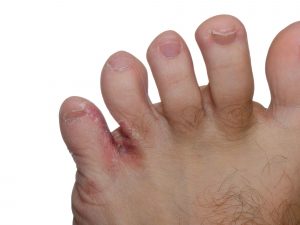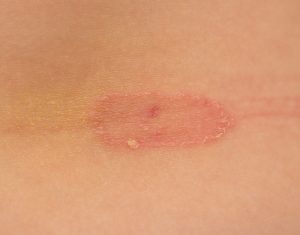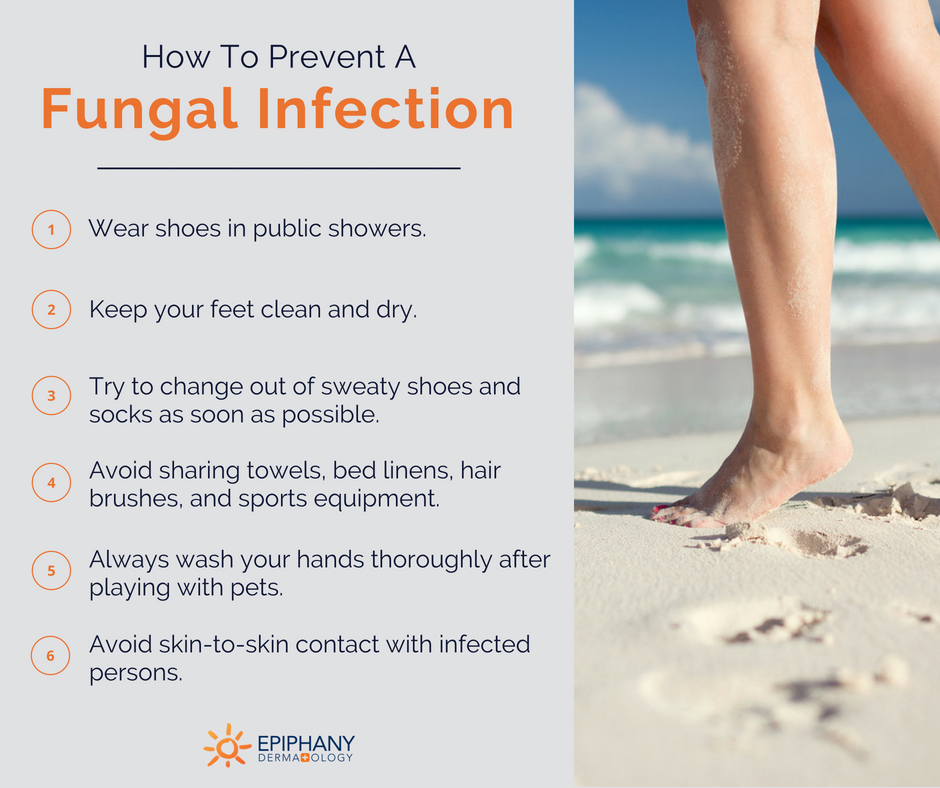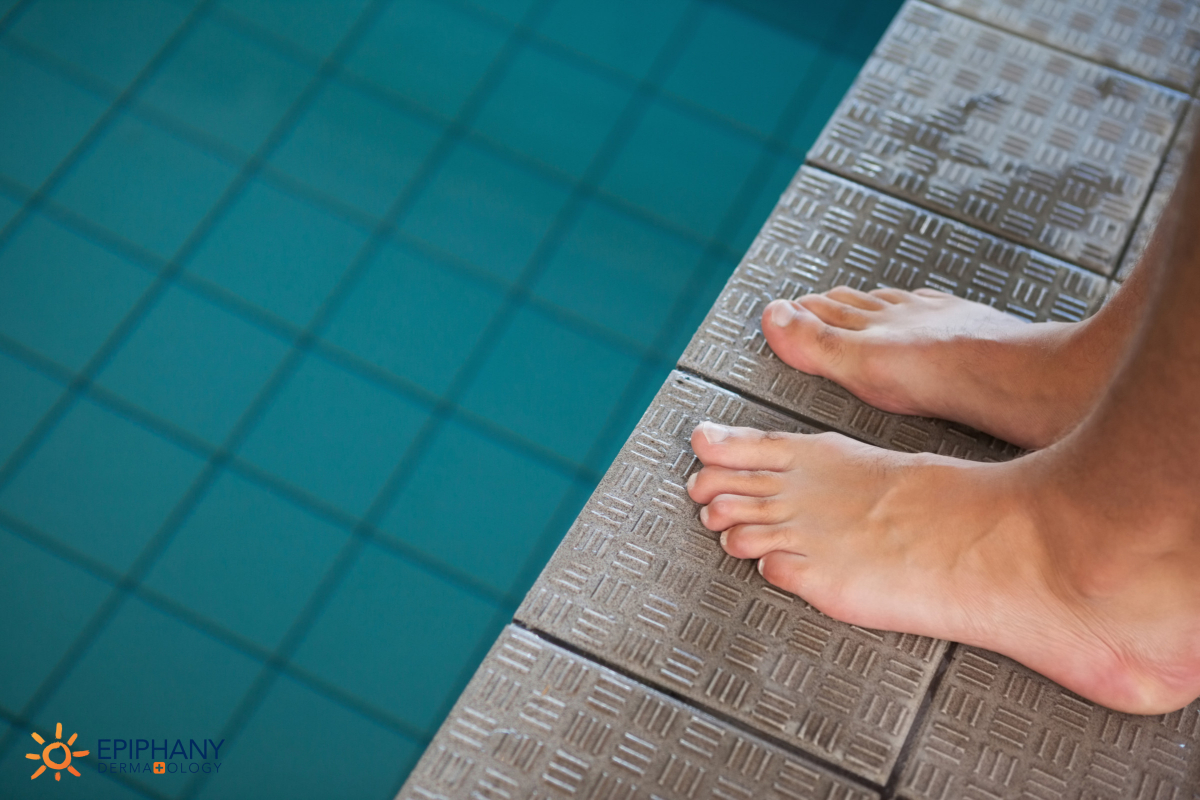You’ve got an itch to scratch. Literally.
It didn’t seem like a problem at first… and then it got worse. Maybe your foot started itching a few days ago and now it’s a red, scaly mess. Maybe you had a little spot on your calf that’s now spreading around your leg.
Sounds like a fungal infection.
What Are the Most Common Fungal Infections?
Athlete’s foot and ringworm are two of the most common fungal infections — and most of us have dealt with them at some point in life.
Let’s start by setting the record straight:
No, athletes aren’t the only people who get athlete’s foot.
No, ringworm isn’t caused by a worm or a parasite.
Both athlete’s foot and ringworm are caused by infections. See, there are fungi everywhere around us, but very few affect humans. When they do, they often take us by surprise as we suddenly realize that itchy spot hasn’t healed and it might be more than a fleeting irritation.
If you think you may be dealing with a fungal infection, here’s what you need to know.

What Does Athlete’s Foot Look Like?
The most common fungal infection is athlete’s foot. It’s red, foggy, white skin that flakes. It’s between your toes — often in the toe-web between your smallest toes.
Athlete’s foot is an itchy, rash-like infection you can get from two (opposite) ways:
- Keeping hot, sweaty feet in hot, enclosed shoes.
- Walking barefoot in open, fungus-friendly areas.
If your skin starts to itch and look irritated after either of these situations, you’re likely dealing with a fungal infection.
 What Does Ringworm Look Like?
What Does Ringworm Look Like?
Ringworm (aka, tinea corporis) is another fungal infection, but it’s tricky. It easily confused with other skin problems like eczema, seborrheic dermatitis, or psoriasis. But if you look closely, you’ll notice this particular infection starts from a circular patch on the skin and travels outward.
Ringworm results in red, itchy, and scaly skin. Most people are familiar with ringworm but don’t know exactly how it looks. With ringworm, always look for a circular center.
What Causes a Fungal Infection?
Fungi are everywhere — from your shower, to your shoes, to the mats at the gym. When there’s a weak spot in the skin, you’re more susceptible. Maybe you scratched your skin or the skin is wet and soft between the toes, making it more open to infection.
Fungi are unavoidable, but just being exposed doesn’t mean you’ll be affected by them. You have to be in the wrong place at the wrong time to get an infection. It takes some kind of weakness in the skin for the infection to take hold. For example, a fungus may be in the shower, but healthy skin acts as a barrier to protect us from it. It’s only when there’s a cut or opening in the skin that’s exposed to the fungus that it irritates our skin.
When a fungus enters our skin, it stays on the top layer. It remains a superficial infection rather than something diving deep into the skin. In fact, it’s initially so shallow the body doesn’t even send out a response against it.
But, as some of it grows a little deeper, it triggers an itchy response. Even then the fungus stays in the top layer of the skin, making topical treatments your best option.
How Can I Treat a Fungal Infection at Home?
Fungal infections are relatively easy to treat… if you know what to do. Never hesitate to contact your dermatologist, but there are steps you can take to effectively treat most fungal infections at home.
When you notice a fungal infection, first reach for the anti-fungal cream. However, your skin will heal much quicker if you combine your anti-fungal ointment with an exfoliation treatment. Anti-fungal medicines prevent the fungus from growing — they don’t kill the fungus itself. We use antibiotics to kill bacteria, but we don’t have anything like that for fungi. The best medicines we have only stop its growth. The affected skin needs to slough off in order for the fungus to disappear.
Since the fungus is on the top layer of your skin, it can be exfoliated off. Use either a salicylic acid or urea cream to speed up your skin’s cell turnover. Ultimately, you want to get rid of the top layer of skin. Adding one of these exfoliants to your anti-fungal treatment will speed up that process.
Think of your skin like a creek that leads to a waterfall. It’s slowly moving forward and the old skin is falling off the waterfall. But there’s some guy in a canoe paddling upstream. He’s the fungus. What if we take his paddle away? Well, that’s the anti-fungal medication… Now he’ll move towards the waterfall faster. What if we speed up the current of the creek? That’s the salicylic acid or urea cream. The more we can speed up the turnover of the skin, the quicker we’ll get rid of the fungus.

How Can I Prevent a Fungal Infection?
We can’t always avoid fungi, but we can take steps towards avoiding fungal infections. Here are some tips:
- Wear shoes in public showers.
- Keep your feet clean and dry. Try to change out of sweaty shoes and socks as soon as possible.
- Avoid sharing towels, bed linens, hair brushes, and sports equipment.
- Always wash your hands thoroughly after playing with pets.
- Avoid skin-to-skin contact with infected persons.
If you’re dealing with a fungal infection, no need to worry. A simple treatment regimen of anti-fungal cream and an exfoliant should clear it up soon. Or just give your dermatologist a call. They’ll be able to confirm your diagnosis and create a treatment plan specific to you.

Dr. R. Todd Plott is a board-certified dermatologist in Coppell, Keller, and Saginaw, TX. His specialization and professional interests include treating patients suffering with acne, identifying and solving complex skin conditions such as psoriasis, rosacea, atopic dermatitis, and identifying and treating all types of skin cancers. In his spare time, Dr. Plott enjoys cycling, traveling with his wife, and spending time with his children and new grandson.
Learn more about Dr. Plott.

